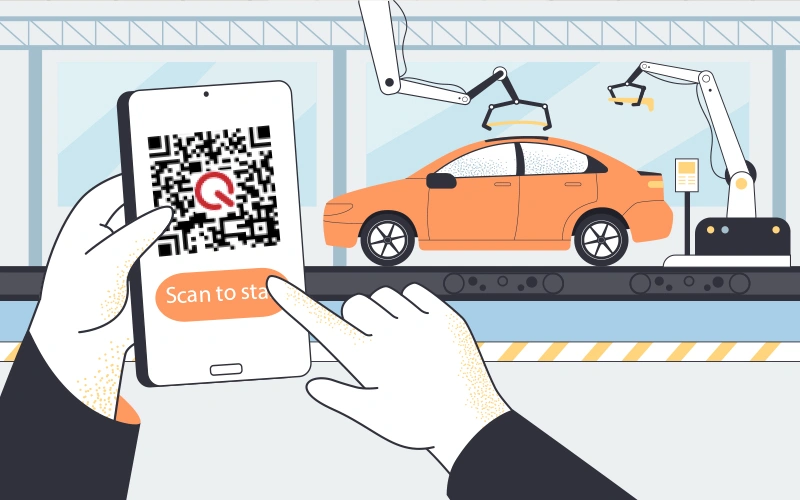
QR Codes in the Automotive Industry: Driving Smarter Features Forward
As the automotive industry evolves with technology, QR codes have emerged as versatile tools, bridging the gap between physical vehicles and digital innovation. These small squares of data are revolutionizing how cars are manufactured, maintained, and experienced by drivers.
Key Benefits of QR Codes in the Automotive Industry
- Enhanced Vehicle Interaction
- QR codes provide instant access to vehicle manuals, troubleshooting guides, and safety information. They empower drivers with critical knowledge without the need for bulky documents.
- Streamlined Manufacturing Processes
- By tagging parts with QR codes, manufacturers can track components throughout production, ensuring accuracy and efficiency in assembly.
- Improved Customer Experience
- From unlocking rental cars to customizing settings, QR codes offer convenience and personalization, transforming how drivers interact with their vehicles.
- Safety and Diagnostics
- QR codes enable real-time access to vehicle diagnostics, helping both drivers and mechanics maintain optimal performance and address issues promptly.
Seven Use Cases for QR Codes in Cars
- Vehicle Identification and Registration
- QR codes simplify the process of registering vehicles and provide verifiable identification, aiding in theft prevention and ensuring authenticity.
- Component Identification
- Each car part can be tagged with a QR code, linking to its manufacturing details, installation instructions, and maintenance requirements.
- Unlocking Rental Vehicles
- Rental companies use QR codes for digital keyless entry, allowing customers to unlock and start their rentals via smartphone.
- Passenger Safety
- Inside vehicles, QR codes direct passengers to emergency protocols and safety tips, promoting a safer ride experience.
- Activating Vehicle Insurance
- Scanning a QR code can activate insurance policies or provide proof of coverage, streamlining claims and emergency assistance.
- Tracking Inventory
- Manufacturers and dealerships use QR codes to monitor stock levels and manage distribution effectively.
- Digital Keyless Entry
- QR codes paired with smartphones allow seamless access to cars, replacing traditional keys with secure, touchless technology.
Smart QR Code Features for Vehicles
- Vehicle Tracking and Diagnostics
- Monitor location and performance metrics through QR codes linked to telematics systems.
- Personalized Settings
- Drivers can adjust seating, climate, and infotainment preferences by scanning a code, making every drive more comfortable.
- Integration with Voice Assistants
- QR codes enable voice-controlled navigation, media playback, and car diagnostics for a hands-free experience.
- Sharing Vehicle Information
- Potential buyers can scan codes on showroom models to view specs, videos, and reviews, enhancing transparency in the buying process.
Benefits for Manufacturers
- Automated Processes
- QR codes optimize production lines, ensuring parts are correctly assembled and tracked from start to finish.
- Cost Savings
- Reduced paperwork and manual errors lead to significant cost efficiencies in inventory and quality control.
- Customer Engagement
- By integrating QR codes, automakers provide interactive experiences that build trust and loyalty among customers.
Conclusion
QR codes are steering the automotive industry toward a smarter, more connected future. Their ability to integrate digital solutions with physical assets enhances efficiency, safety, and user experience. Whether for manufacturers, dealers, or drivers, QR codes deliver innovation that simplifies and enriches every journey.